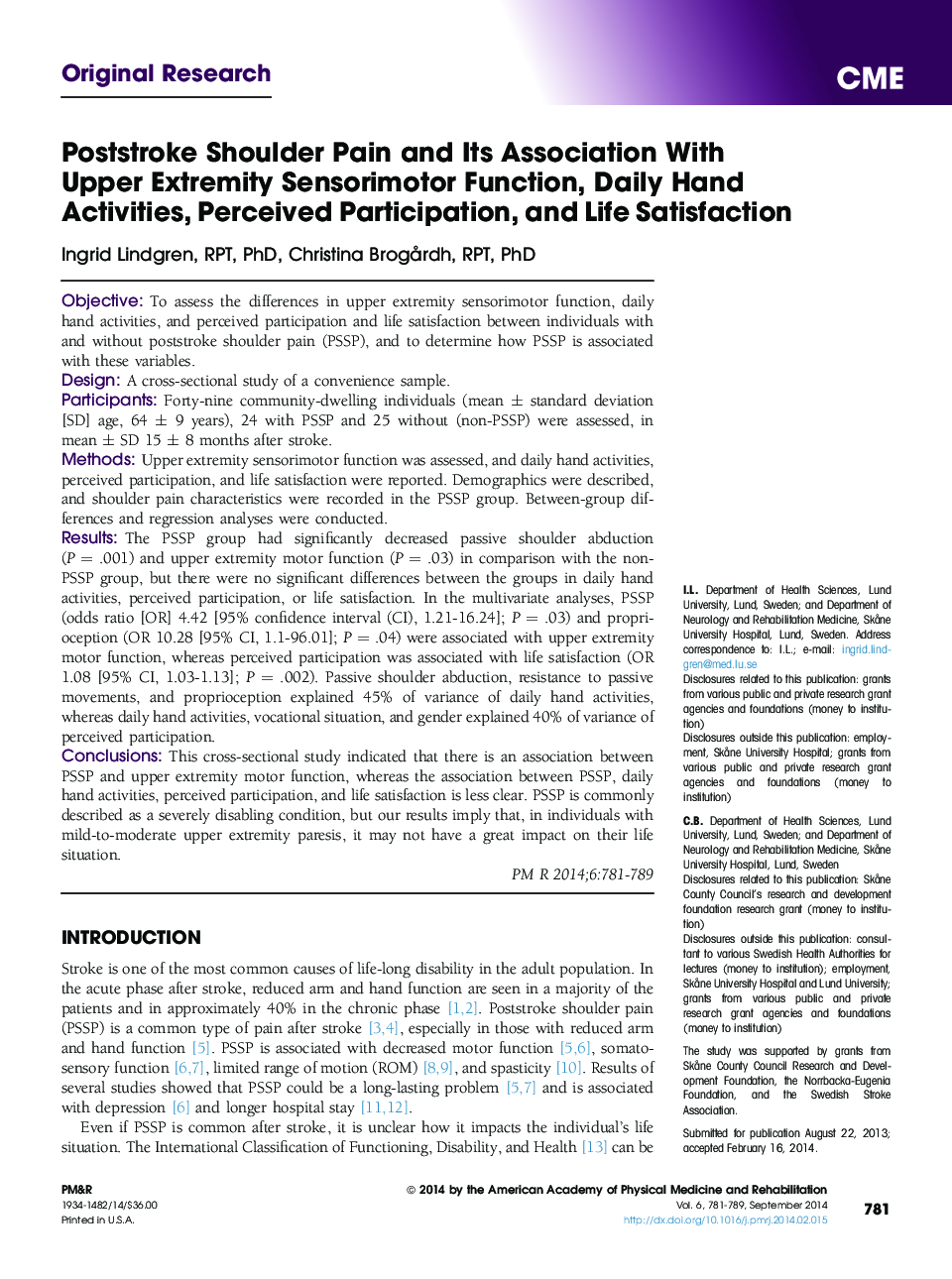| کد مقاله | کد نشریه | سال انتشار | مقاله انگلیسی | نسخه تمام متن |
|---|---|---|---|---|
| 2715881 | 1145326 | 2014 | 9 صفحه PDF | دانلود رایگان |
ObjectiveTo assess the differences in upper extremity sensorimotor function, daily hand activities, and perceived participation and life satisfaction between individuals with and without poststroke shoulder pain (PSSP), and to determine how PSSP is associated with these variables.DesignA cross-sectional study of a convenience sample.ParticipantsForty-nine community-dwelling individuals (mean ± standard deviation [SD] age, 64 ± 9 years), 24 with PSSP and 25 without (non-PSSP) were assessed, in mean ± SD 15 ± 8 months after stroke.MethodsUpper extremity sensorimotor function was assessed, and daily hand activities, perceived participation, and life satisfaction were reported. Demographics were described, and shoulder pain characteristics were recorded in the PSSP group. Between-group differences and regression analyses were conducted.ResultsThe PSSP group had significantly decreased passive shoulder abduction (P = .001) and upper extremity motor function (P = .03) in comparison with the non-PSSP group, but there were no significant differences between the groups in daily hand activities, perceived participation, or life satisfaction. In the multivariate analyses, PSSP (odds ratio [OR] 4.42 [95% confidence interval (CI), 1.21-16.24]; P = .03) and proprioception (OR 10.28 [95% CI, 1.1-96.01]; P = .04) were associated with upper extremity motor function, whereas perceived participation was associated with life satisfaction (OR 1.08 [95% CI, 1.03-1.13]; P = .002). Passive shoulder abduction, resistance to passive movements, and proprioception explained 45% of variance of daily hand activities, whereas daily hand activities, vocational situation, and gender explained 40% of variance of perceived participation.ConclusionsThis cross-sectional study indicated that there is an association between PSSP and upper extremity motor function, whereas the association between PSSP, daily hand activities, perceived participation, and life satisfaction is less clear. PSSP is commonly described as a severely disabling condition, but our results imply that, in individuals with mild-to-moderate upper extremity paresis, it may not have a great impact on their life situation.
Journal: PM&R - Volume 6, Issue 9, September 2014, Pages 781–789
